
© 2010-2023 by Fine Arts of the Southwest, Inc. All rights reserved.
Unauthorized reproduction or use is strictly prohibited by law.
An exceptional historic Hopi “Sikyatki-Revival” style polychrome low-profile pottery jar with butterfly or moth pictorials by Nampeyo of Hano, c. 1910-1915
This outstanding vessel is undoubtedly one of the most interesting and distinctive pieces of historic Hopi pottery that we have ever seen and we have seen quite a few of them over the past 35-plus years.
This jar is remarkable for any number of reasons beginning with its lovely, daringly low-profile swooping horizontal shape adapted by Nampeyo and other Hopi potters from 15th-17th century Hopi “Sikyatki Polychrome” type (1375-1625 A.D.) ceramic jars. The butterfly or moth design motif was also adapted from Hopi Sikyatki pottery designs made during this time period, as detailed below. This period was the literal ‘’golden age” of historic Hopi ceramics where beautifully made and elaborately decorated pottery jars, bowls, canteens and other vessels with wildly unique and complex depictions of animal, bird, insect and mythical creatures abounded.
The overall presentation here is rich and complex and masterfully done, fully revealing the incredibly inspired mind and talented hands of this extraordinary artist. Let’s begin at the beginning, with the gorgeous, dramatic, low-shoulder Sikyatki style shape. Nampeyo didn’t singlehandedly create the Sikyatki pottery Revival at Hopi, but she was a master at understanding and absorbing its nuances and demanding techniques and took it to even greater artistic and technical heights than even her ancient forbears did in some ways. The jar is just perfectly and evenly formed; gravity-defyingly low and finely thin-walled. The precise long-stroke stone polishing, a telltale Nampeyo characteristic, is beautifully accomplished here and the high-temperature coal-firing, another Nampeyo “signature” is also perfectly achieved yielding a sumptuous rich yellow-orange color with beautiful lighter yellow firing clouds or “Blushes”.
The overall design is so completely explosive and dynamic it is almost breathtaking; a double four-part horizontally-opposed arrangement, a classic Nampeyo layout and presentation, with four large pictorial butterflies or moths each positioned in its own separate elaborately-painted rectangularly-shaped enclosure or “house” punctuated by a deep rich black painted four-part dividing geometric adjoining motif which both graphically and dramatically separates and also binds the insect designs together into a harmonious whole with a great sense of overall energy and motion. And every bit of it done according to age-old Hopi tradition straight out of the potter’s imagination, without the slightest assistance of any preliminary sketches or studies. Its nothing short of sheer visual genius!!
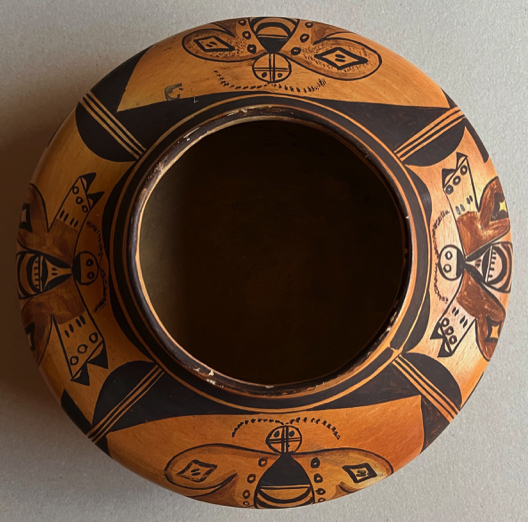
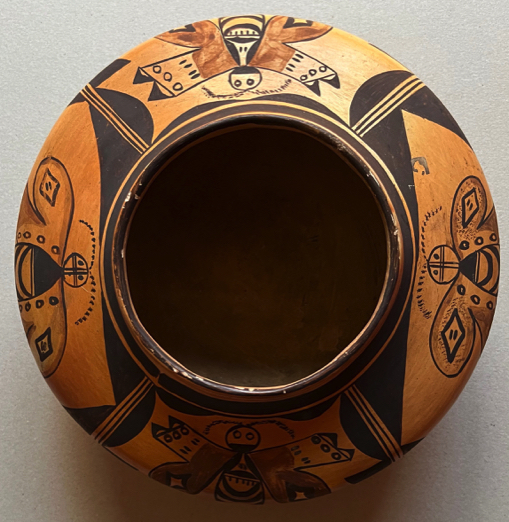
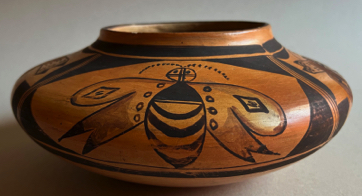
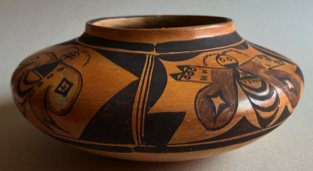
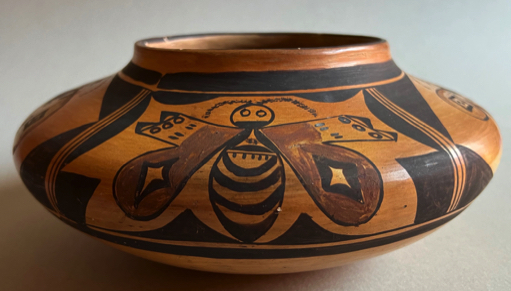
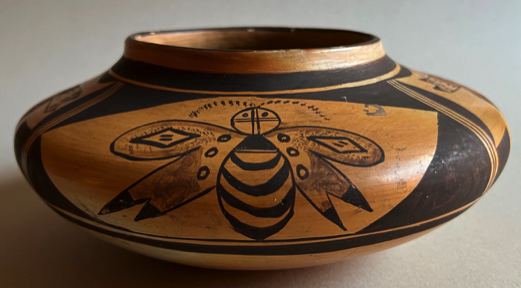
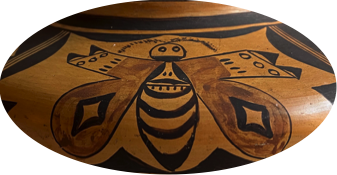
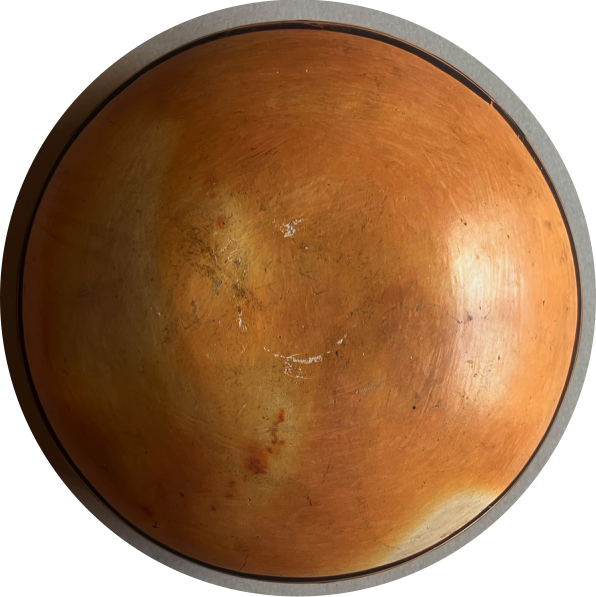
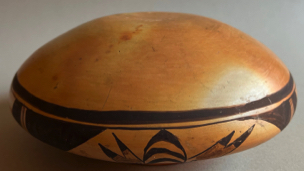
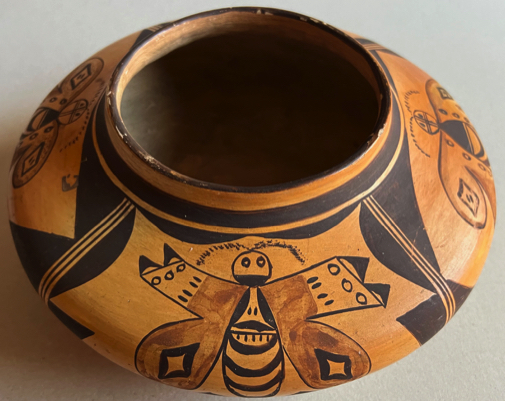
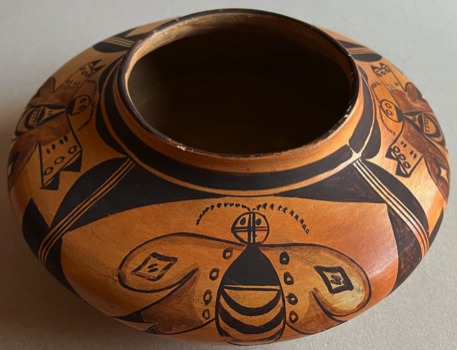
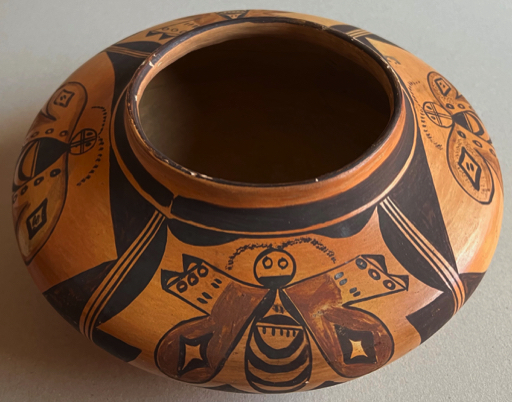
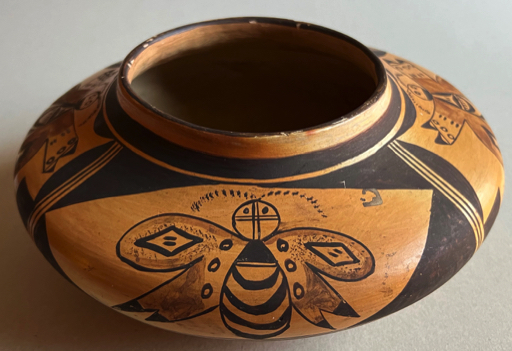
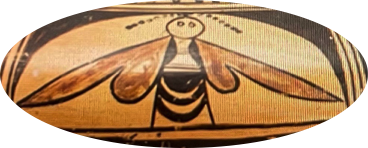
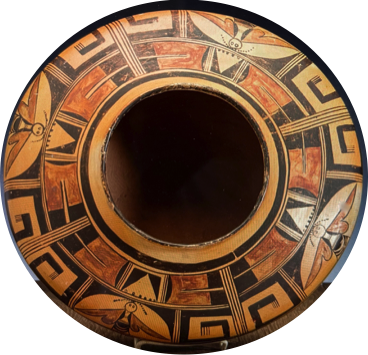
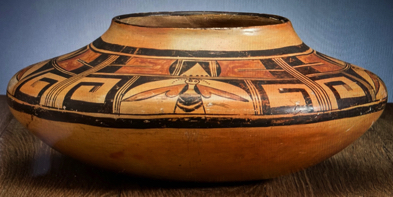
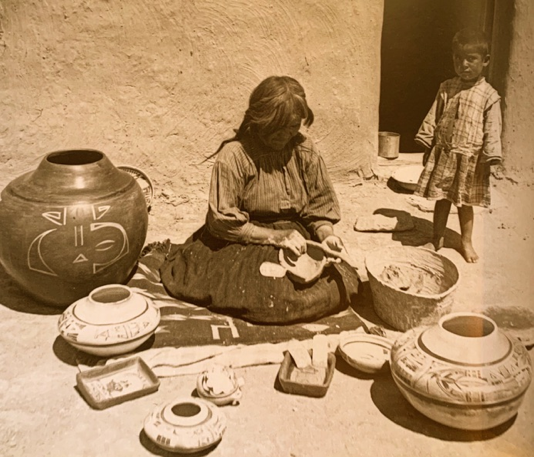
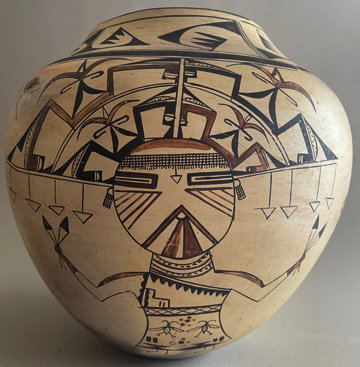
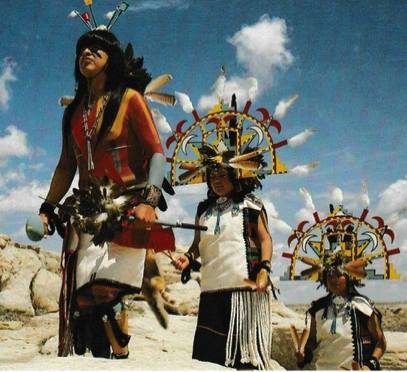
At left, a Polikmana Kachina doll from the H.R. Voth Collectiom at the American Museum of Natural History. At center, Polikmana Kachina dancers at the Hopi Butterfly Dance. At right, a large Hopi Polychrome pottery storage jar by Nampeyo featuring Polikmana Kachina designs.
Left photo source and © "Classic Hopi and Zuni Kachina Figures" by Andrea Portago and Barton Wright, Museum of New Mexico Press, Santa Fe, 2006, plate 7.
Center photo source and © Arizona Highways Magazine. Right photo source and © Fine Arts of the Southwest, Inc., Santa Fe.
“When I first began to paint, I used to go to the ancient village and pick up
pieces of pottery and copy the designs. That is how I learned to paint. But now,
I just close my eyes and see designs and I paint them.”
-Nampeyo
A few words about the beautiful pictorial insect elements. According to our knowledgable Hopi sources, the Hopi make little or no distinction between butterflies and moths, they are considered very similar symbols and elements of fertility and growing things and they are both part of the important Hopi Badger/Butterfly Clan. The Hopi have a majestic annual Butterfly Dance which features a human manifestation of the beautiful Kachina spirit being known as the “Polikmana” or “Butterfly Girl”.
“Butterfly is ‘povolhoya’. Moth is ‘hokona’.
Both belong to badger/butterfly clan.”
-Hopi friends
The jar measures a very nicely-sized 10” in diameter and is 4” in height. It is in remarkably excellent original condition, and particularly so in light of its century-plus of age. A thorough examination under Ultraviolet light reveals no evidence at all of any restoration or overpainting. There are a few tiny inconsequential nicks around the rim and a small ding and scratch here and there on the body of the jar, but that’s all and for its century-plus of age that’s more than a little impressive.
Over the past twenty-five years, we have placed perhaps sixty or seventy highest-quality historic Hopi jars by Nampeyo and others in various museums around the country and the world from The Art Institute of Chicago to The Gilcrease Museum in Tulsa to The Scottsdale, Arizona Museum of the West. In our view, this unique and striking jar is the artistic, technical and historic equal of any of these pieces, an artistic masterwork by the inspired mind and immensely skilled hand of a master artist.
SOLD
"The Butterfly in Hopi Myth and Ritual"
“The butterfly, moth and dragonfly are among the most prominent insects figured on prehistoric Hopi pottery; they are frequently mentioned in the mythology of these people, and their symbols occur constantly on secular and ceremonial paraphernalia. There is a prominent clan in one of the Hopi pueblos called The Butterfly Clan which preserves legends of its past history and migrations.”
-Jesse Walter Fewkes, American Anthropologist, Vol 12, No 4, Oct-Dec, 1910
At center, a Sikyatki pottery design designated "Figure 83 -Moth” by 1895 Sikyatki Archeologist Jesse Walter Fewkes in "Prehistoric Hopi Pottery Designs", Dover Books, 1973, pp. 152. At left and right, details of Nampeyo's painted moth or butterfly designs.
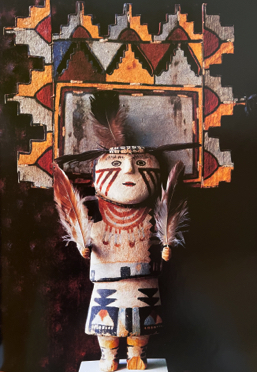
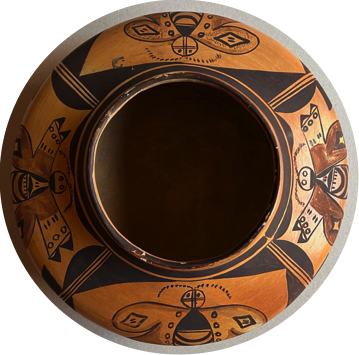
At left, a Sikyatki polychrome jar with butterfly or moth pictorials referred to as "The Butterfly Vase" and illustrated in "Prehistoric Designs on Hopi Pottery" by Sikyatki archeologist Jesse Walter Fewkes. According to Fewkes, “A most striking figure of a butterfly is represented by six drawings on the so-called “butterfly vase”. These resemble birds, but they all have antennae, whcih identify them as insects."At right, another Hopi Polychrome jar by Nampeyo c. 1915 with butterfly or moth pictorial designs.
-Fewkes quotation source and © "Prehistoric Designs on Hopi Pottery", Dover Books, 1973, pp.152. Right top and bottom photo source and © Cowan's Auctions
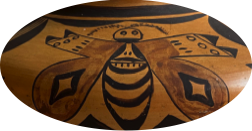
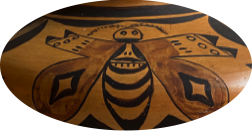
"Mrs. Nampeyo, an acknowledged best Hopi indian woman Pottery maker 1st Mesa Hopiland, Ariz. Sichomovi."
R. Raffius, 1905 photo source and © Keystone-Mast Collection, UCR/California
Museum of Photography, University of California, Riverside